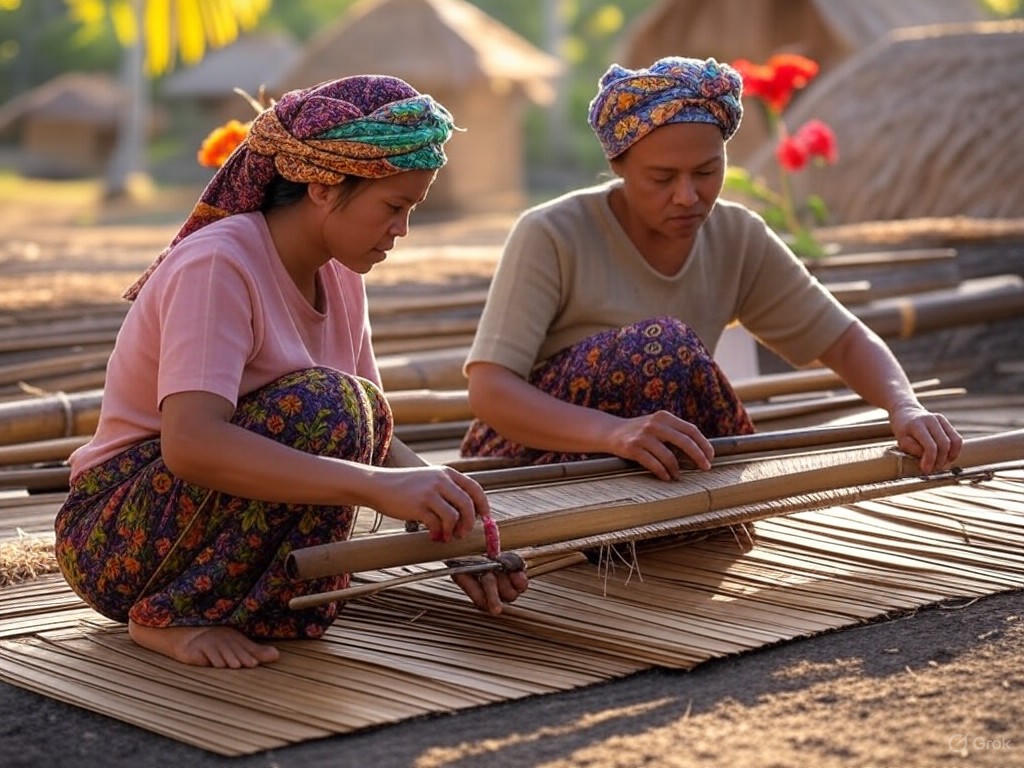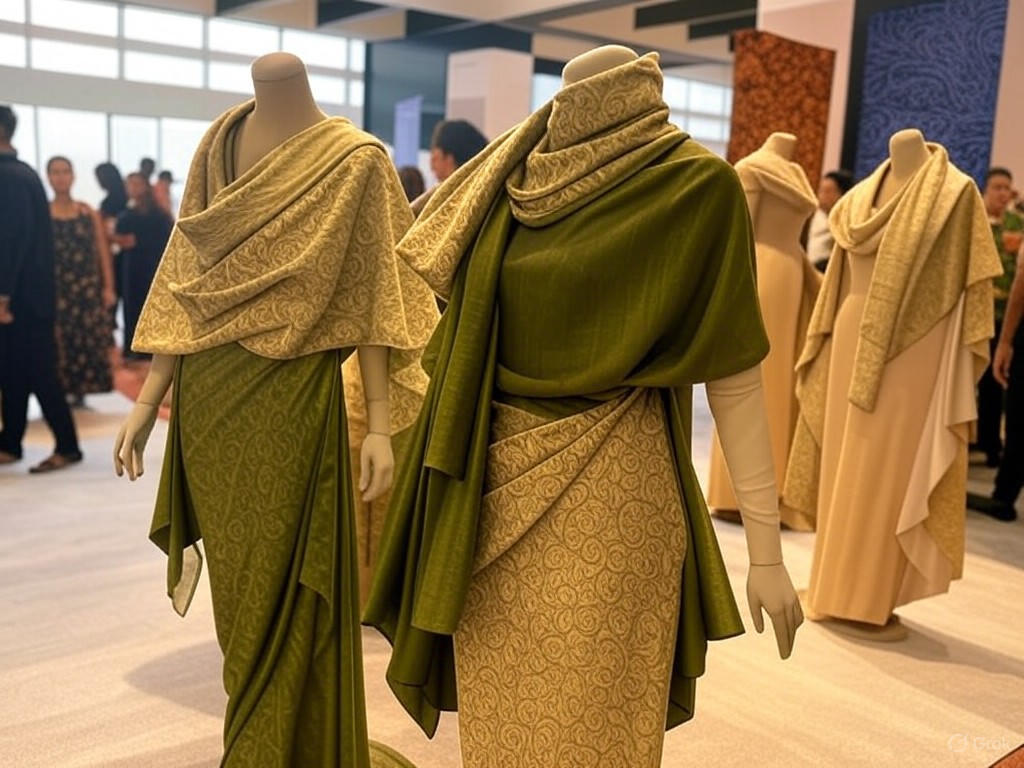Bamboo Fashion in Asia: Eco-Chic Trends
In the bustling workshops of rural Indonesia and the vibrant design studios of Bangkok, a quiet revolution is weaving its way into the global fashion industry. Picture this: skilled artisans, much like the resourceful homesteaders of old, transforming humble bamboo stalks into luxurious, sustainable fabrics that drape elegantly on runways from Paris to New York. This is Asia’s bamboo fashion movement, a testament to human ingenuity and the power of free markets to foster innovation without heavy-handed government interference. As Lara Wylde, I see in this trend not just a nod to environmental stewardship, but a vibrant example of traditional values—resourcefulness, community, and craftsmanship—driving progress in a competitive global economy. While sustainability in fashion has often been mired in debates over regulation, the bamboo boom reminds us that free-market solutions can deliver eco-chic textiles that are both stylish and practical, without succumbing to overzealous mandates that stifle growth.
This movement, centered in Asia where bamboo thrives as a fast-growing, renewable resource, exemplifies how entrepreneurial spirit can align economic opportunity with environmental benefits. Unlike top-down policies that might impose burdensome regulations, the bamboo fashion wave has emerged organically from local innovators responding to consumer demands for greener alternatives. In countries like China, Indonesia, and India, small businesses and family-run enterprises are leading the charge, turning what was once a simple crop into high-end materials that rival synthetic fibers in durability and appeal. Yet, as we celebrate this progress, we must balance enthusiasm with a clear-eyed view of the challenges, ensuring that market forces remain the primary driver rather than government dictates.
The Allure of Bamboo: A Narrative of Innovation and Tradition
Asia’s bamboo fashion story begins in the verdant fields where this versatile plant grows abundantly, requiring minimal water and pesticides compared to cotton or synthetic alternatives. Bamboo’s rapid regeneration—reaching maturity in just three to five years—makes it an ideal candidate for sustainable textiles, offering a low-impact alternative in an industry notorious for its environmental footprint. Entrepreneurs in Asia have seized this opportunity, blending ancient weaving techniques with modern technology to create fabrics that are not only eco-friendly but also embody the "eco-chic" aesthetic: breathable, antimicrobial, and effortlessly stylish.

Artisans in a Balinese village demonstrate age-old weaving methods, transforming bamboo fibers into lightweight, eco-chic fabrics that honor traditional craftsmanship while meeting global market demands.
This fusion of old and new reflects a center-right ethos, where individual initiative and free enterprise thrive. Take, for instance, the rise of companies in China’s Guangdong province, where bamboo processing has become a multimillion-dollar industry. Here, private firms have invested in efficient milling technologies, driven by market incentives rather than subsidies, to produce yarns that are exported worldwide Wall Street Journal. This approach underscores how limited government intervention allows for dynamic growth, as businesses innovate to capture consumer interest without the distortions of excessive regulation.
Yet, the movement isn’t without its hurdles. Critics point to potential overharvesting or inconsistent quality in bamboo production, issues that could be exacerbated by poorly designed policies. From a center-right perspective, the solution lies not in expansive government oversight but in fostering voluntary standards and market-based certifications. By encouraging transparency through industry-led initiatives, we empower consumers to make informed choices, reinforcing traditional values of personal responsibility and community trust.
Evidence of Market-Led Sustainability: Data and Real-World Impact
The evidence for Asia’s bamboo fashion success is compelling, backed by data from credible sources that highlight its economic and environmental gains. According to a report from the textile sector, global demand for bamboo-based fabrics has surged by over 200% in the past decade, driven largely by Asian exporters who now supply major brands like H&M and Gap Bloomberg. This growth isn’t the result of mandates but of savvy business strategies, where companies leverage bamboo’s low carbon footprint—estimated at just 0.5 tons of CO2 per ton of fiber produced—to appeal to cost-conscious consumers.
In India, for example, startups are pioneering bamboo blends that offer affordability without compromising quality, creating jobs in rural areas and bolstering local economies Forbes. A study by the International Bamboo and Rattan Organization shows that for every hectare of bamboo farmed, communities can generate sustainable income streams, reducing reliance on government aid and promoting self-reliance—a cornerstone of traditional values FashionUnited. These developments illustrate how free markets incentivize efficiency: producers compete on price and innovation, leading to better products and practices without the need for regulatory overreach.

Vibrant bolts of bamboo fabric showcased at a Jakarta fashion expo, highlighting the material's versatility and appeal in creating eco-chic apparel for international markets.
Balancing this optimism, we must acknowledge the risks. Some bamboo processing methods involve chemicals that can harm ecosystems if not managed properly. However, rather than calling for blanket regulations, a center-right approach favors market solutions, such as private certifications like the Global Organic Textile Standard, which encourage ethical practices through consumer demand Textile Exchange. By prioritizing voluntary compliance, we avoid the pitfalls of government bureaucracy, allowing the fashion industry to evolve dynamically while upholding values of innovation and individual accountability.
Looking Forward: Embracing Free-Market Eco-Chic
As we conclude, the bamboo fashion movement in Asia stands as a beacon of hope, proving that sustainability can flourish through free-market ingenuity rather than imposed controls. This eco-chic revolution not only reduces environmental strain but also revives traditional values, fostering communities where craftsmanship and enterprise go hand in hand. Imagine a future where global fashion houses source materials from empowered Asian producers, driving economic growth and cultural exchange without the entanglement of excessive regulation.
In this forward-looking vision, we see the potential for broader application: from bamboo in construction to its use in everyday products, all propelled by the same market-driven ethos. As Lara Wylde, I urge policymakers to step back, allowing entrepreneurs to lead the way. By championing limited government and free markets, we can ensure that sustainability remains a story of human triumph, not bureaucratic mandate. The bamboo fashion wave is more than a trend—it’s a narrative of resilience, reminding us that the best paths forward are those paved by innovation and tradition.

